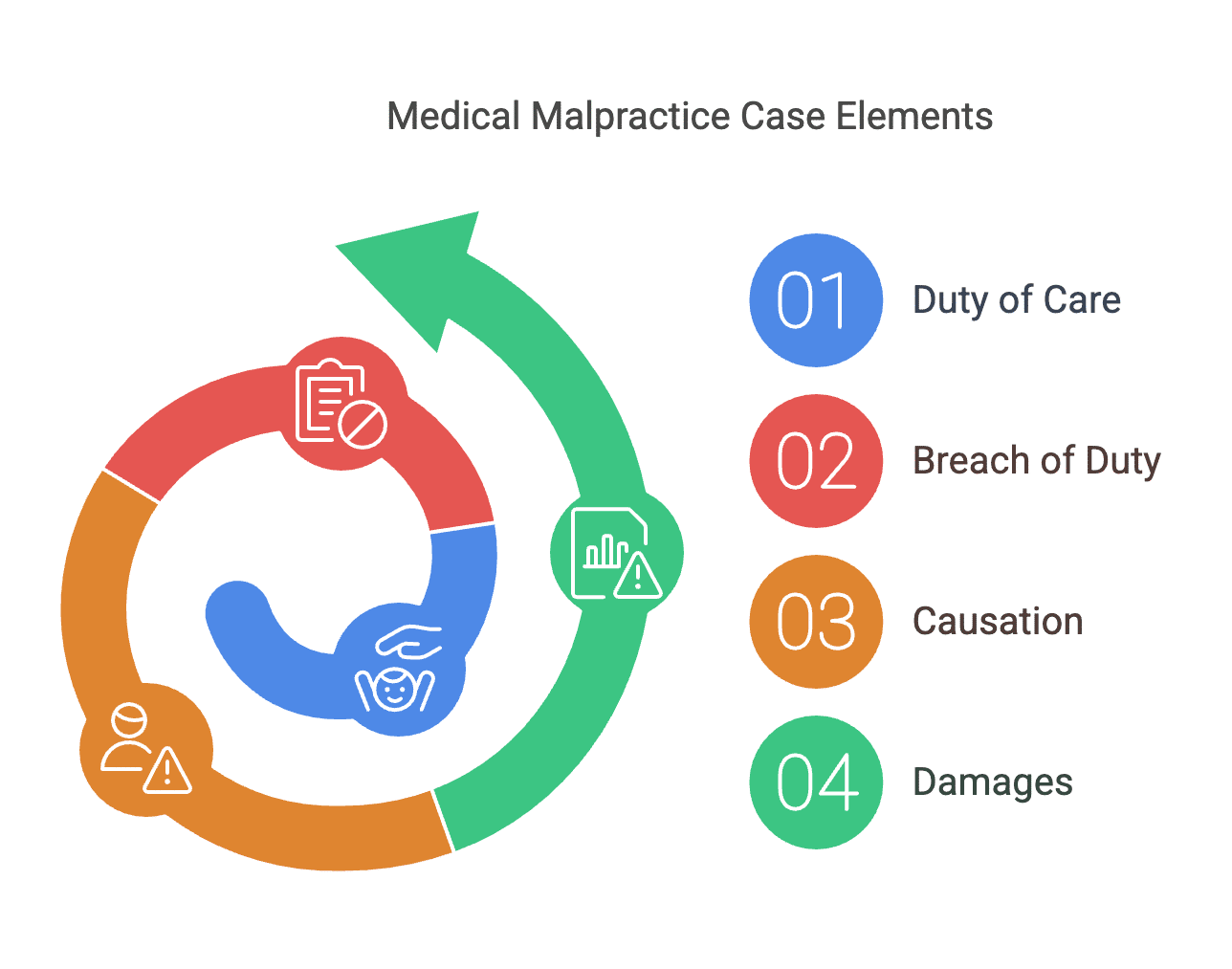Proving negligence in medical malpractice cases can be a complex and challenging process. As a victim of medical negligence, you may face an uphill battle demonstrating that a healthcare provider failed to meet the accepted standard of care. Experienced medical malpractice lawyers employ various strategies to build compelling client cases. In this article, you will learn about the key elements required to prove negligence and the tactics skilled medical negligence attorneys chicago use to gather evidence, work with expert witnesses, and present persuasive arguments.
Understanding the Foundations of Medical Malpractice
Medical malpractice cases hinge on proving that a healthcare provider’s negligence caused harm to a patient. To establish negligence, you must demonstrate four key elements: duty, breach, causation, and damages. The duty of care is the legal obligation healthcare professionals have to provide a standard level of treatment. A breach occurs when this standard is not met.
Causation links the violation directly to the patient’s injury, while damages refer to the actual harm suffered. Understanding these foundational principles is crucial for building a strong case. Experienced lawyers meticulously gather evidence to support each element, often relying on expert testimony to establish the accepted standard of care and how it was violated.
Establishing the Elements of Negligence in Medical Malpractice Cases
You must establish four key elements to prove negligence in a medical malpractice case: duty, breach, causation, and damages. First, demonstrate that a doctor-patient relationship existed, creating a duty of care. Next, show that the healthcare provider breached this duty by failing to meet the accepted standard of care. Then, establish a causal link between the breach and the patient’s injuries.
Quantify the damages suffered as a result of the negligence. Experienced lawyers employ various strategies to prove these elements, including expert testimony, medical records analysis, and comprehensive documentation of the patient’s condition before and after the alleged malpractice.
Gathering and Presenting Compelling Evidence
In medical malpractice cases, the strength of your evidence can make or break your claim. Experienced lawyers employ various strategies to build a robust case. They meticulously collect medical records, expert testimonies, and relevant documentation to establish a clear timeline of events.
Attorneys often collaborate with medical experts to interpret complex medical information and identify deviations from the standard of care. Visual aids, such as medical illustrations or 3D models, can be powerful tools to help jurors understand complex medical concepts.
Additionally, skilled lawyers may use depositions to uncover inconsistencies in the defendant’s account or highlight key points supporting your case. Remember, the goal is to present a straightforward, compelling narrative that demonstrates negligence beyond a reasonable doubt.
Strategies for Overcoming Common Defenses
Anticipating and Countering Arguments
Defense attorneys often employ tactics to shift blame or minimize liability when facing medical malpractice claims. You can counter these strategies by thoroughly preparing your case. Anticipate potential arguments and gather evidence to refute them. This may include expert testimonies, medical records, and witness statements that support your client’s version of events.
Demonstrating Clear Causation
One common defense is challenging the link between the alleged negligence and the patient’s injury. To overcome this, you must establish a transparent chain of causation. Present a compelling timeline of events, supported by medical evidence and expert opinions, to show how the healthcare provider’s actions directly led to the harm suffered by your client.
Maximizing Compensation for Victims of Medical Negligence
Experienced lawyers employ strategic approaches to maximize compensation in pursuing justice for medical malpractice victims. By meticulously documenting all damages—including medical expenses, lost wages, and pain and suffering—attorneys build a comprehensive case for fair restitution. Engaging expert witnesses to testify on the long-term impact of injuries strengthens claims significantly.
Skilled medical negligence attorneys chicago leverage this evidence to secure favorable settlements, while seasoned litigators prepare tirelessly for trial if necessary. Attorneys also explore all potential sources of compensation, including insurance policies and institutional liability, to ensure clients receive the full extent of damages they’re entitled to under the law.
Final Thoughts
As you navigate the complex terrain of medical malpractice cases, remember that proving negligence requires a strategic and methodical approach. You can build a compelling case by leveraging expert witnesses, thoroughly analyzing medical records, and demonstrating a clear breach of the standard of care. Stay vigilant in documenting all evidence and communications throughout the process. While challenging, successfully proving negligence can secure justice and compensation for those harmed by medical errors.








































